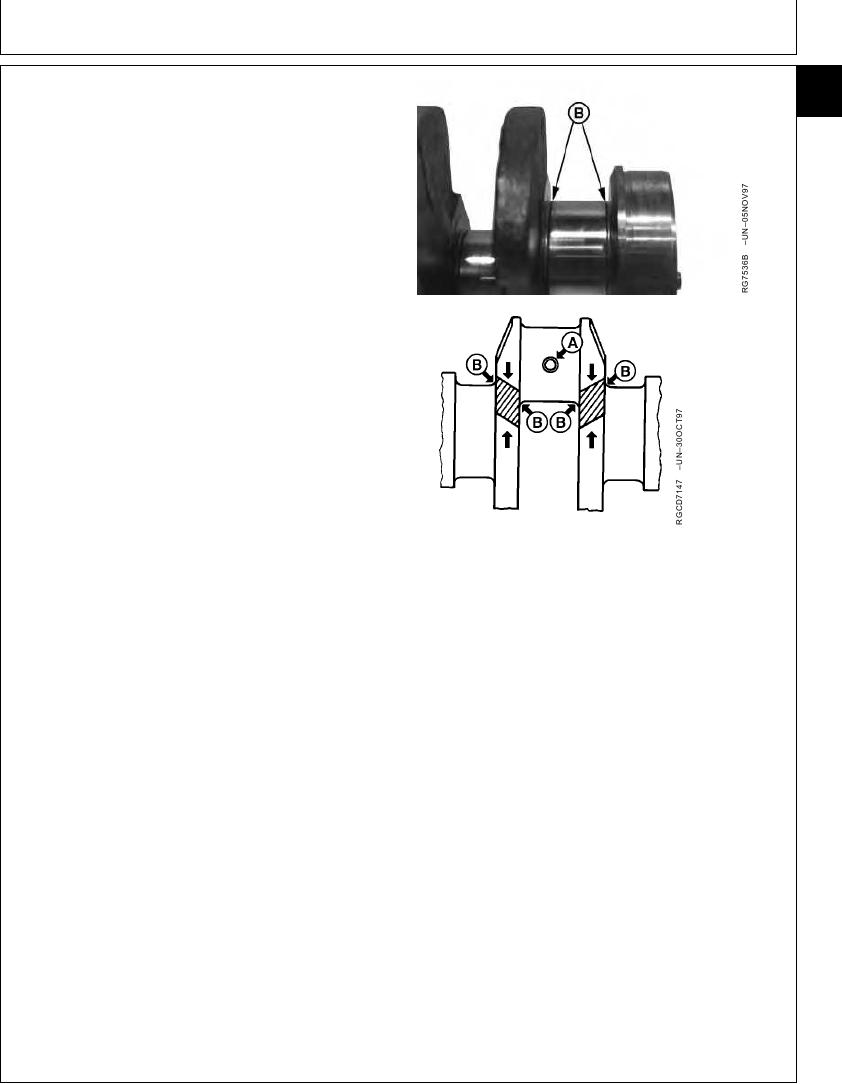
TM 5-3805-280-24-2
Crankshaft, Main Bearings and Flywheel
INSPECT CRANKSHAFT
15
41
NOTE: If vibration damper damage was discovered
during teardown, it is recommended that the
crankshaft be magna-fluxed. This will verify
whether of not it has microscopic cracks or
fissures. See INSPECT VIBRATION DAMPER
earlier in this group.
1. Thoroughly clean crankshaft. Clear restrictions from all
oil passages.
IMPORTANT: Small cracks may not be visible to the
eye. Use a method such as the
Fluorescent Magnetic Particle Method.
This method magnetizes the crank,
employs magnetic particles which are
fluorescent and glow under "black
light". The crankshaft must be
de-magnetized after inspection.
2. Inspect crankshaft for signs of load stress, cracks,
scoring, or journal scratches. Replace crankshaft if
cracks are found.
3. Check each journal for evidence of excessive
A--Rod Journal Holes
overheating or discoloration. If either condition exists,
B--Journal Fillets
replace crankshaft since heat treatment has probably
been destroyed.
4. Inspect front crankshaft gear for cracks, chipped teeth,
or excess wear. Replace gear as required.
5. Inspect the keyway for evidence of cracks or wear.
Replace crankshaft as necessary.
6. Carefully inspect the rear hub of the crankshaft in the
area of the wear sleeve contact surface for evidence of
a rough or grooved condition. Any imperfections in this
area will result in oil leakage. Slight ridges may be
cleaned up with emery cloth or crocus cloth.
7. Carefully check the crankshaft for cracks in the area of
rod journal holes (A) and at journal fillets (B). Replace
crankshaft if any cracks are found.
RG,15,DT7440 1914NOV971/1
13-219

